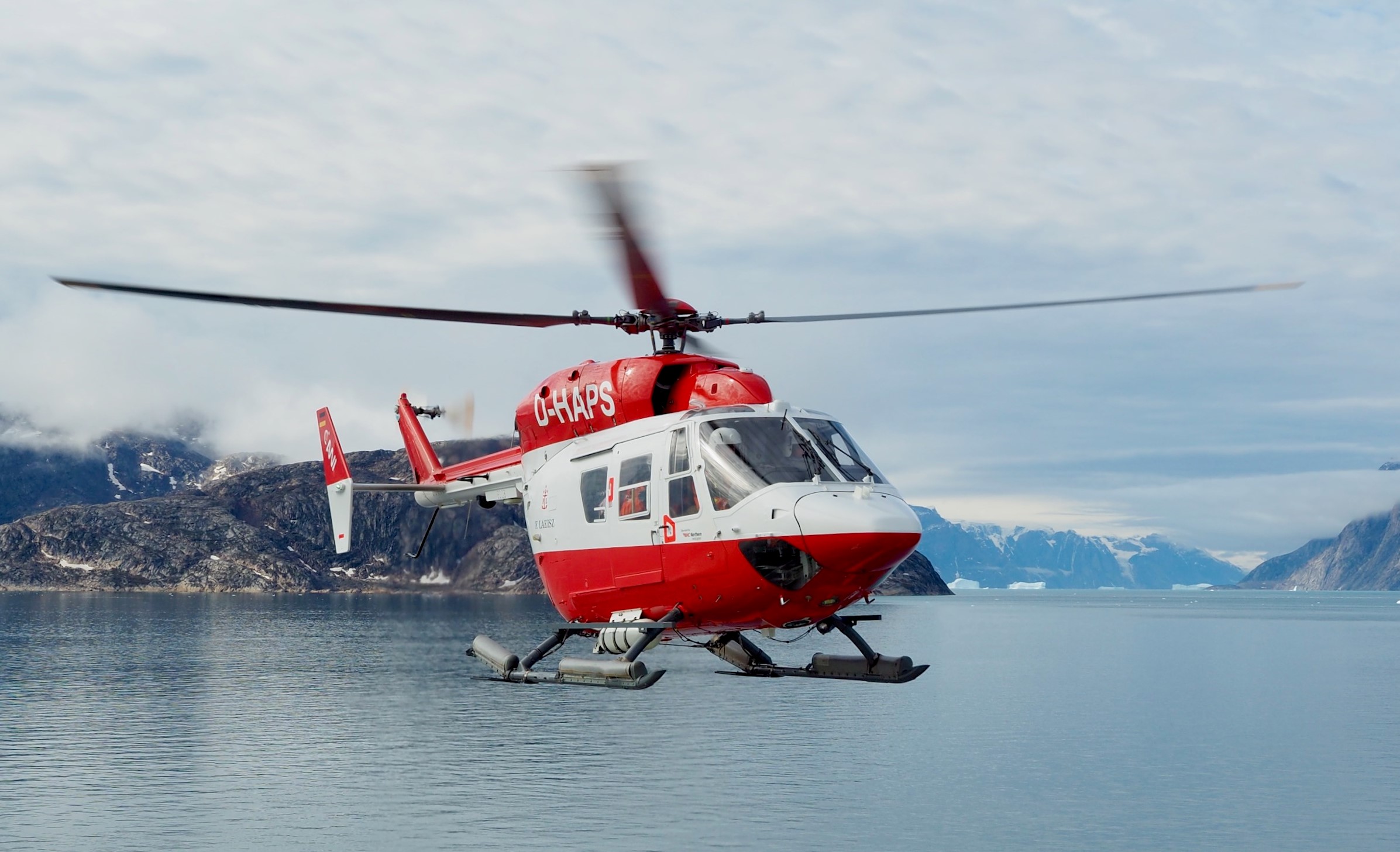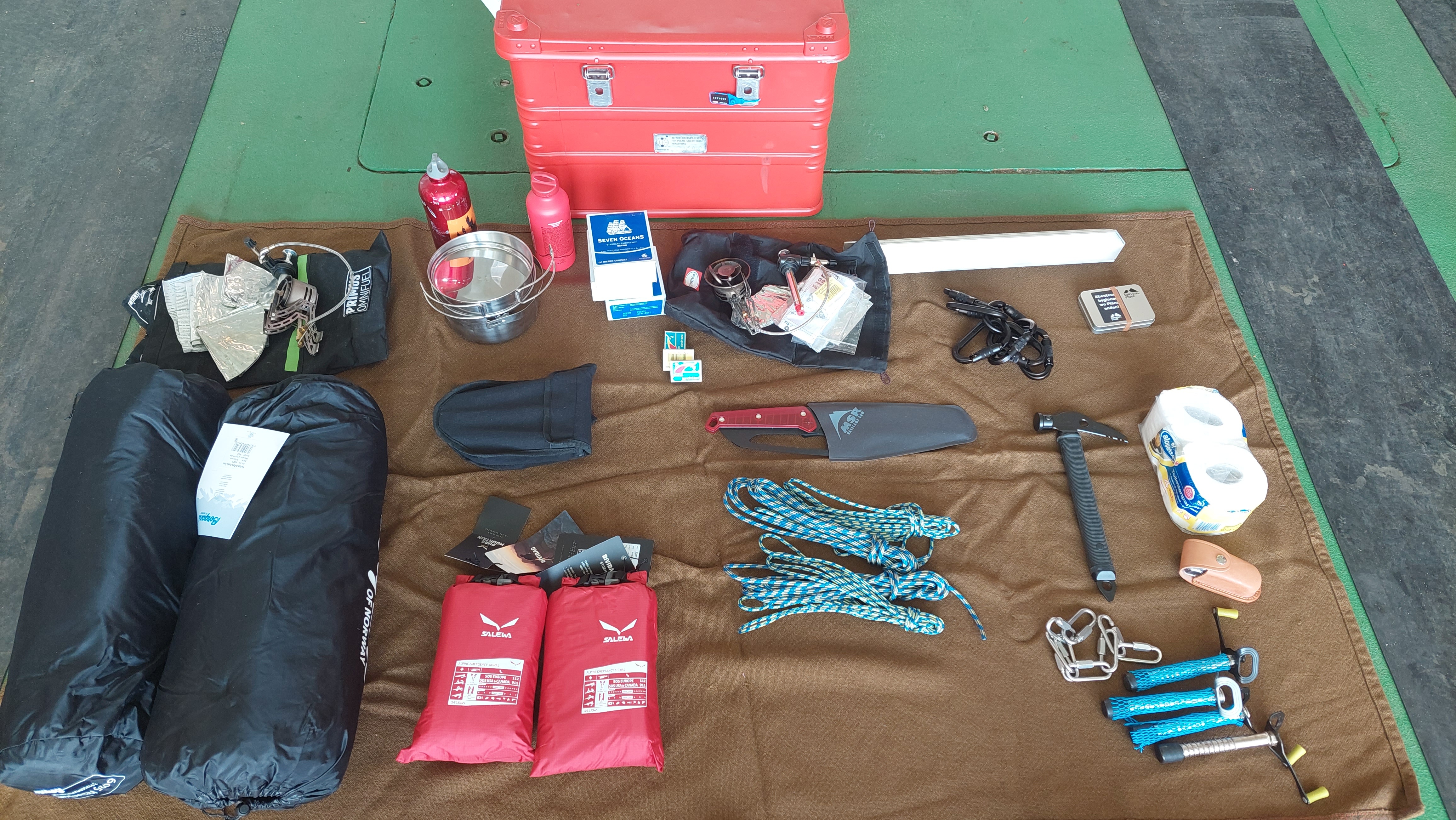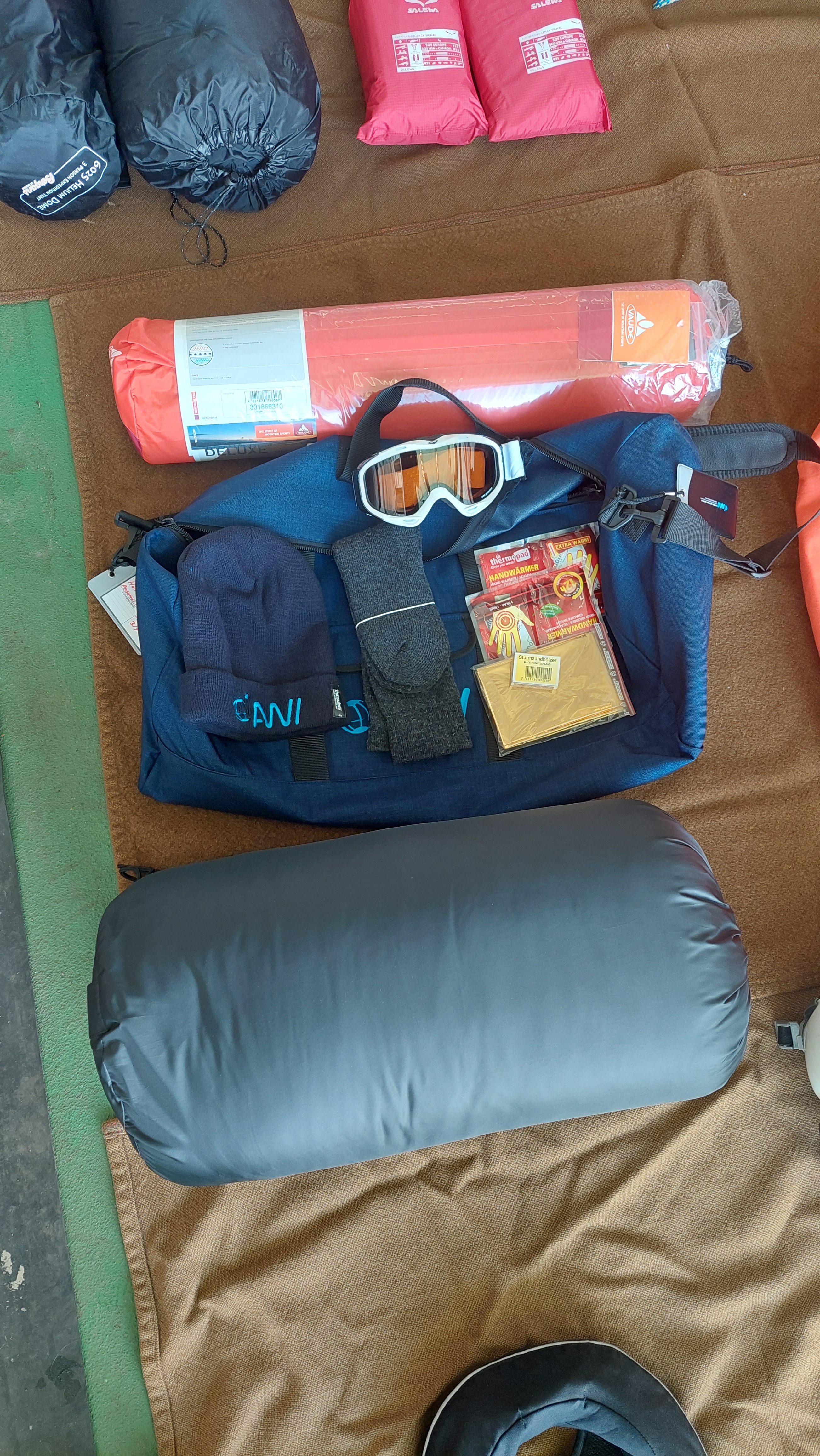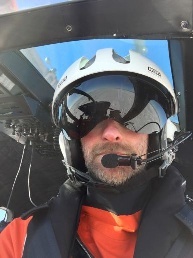Helicopters:
| Type | 2 x BK117 - C1 |
| Manufacturer | Bölkow Kawasaki |
| Engines | 2 x Arriel 1E2 engines, 700PS each |
| Maximum take-off weight | 3350 kg |
| Number of passengers | max. 5 |
| Speed | 125 nm/h (225km/h) |
| Range | 240nm (430km) ; 278 l/h fuel consumption |
| Operating range around the ship | max. 80nm (= abt.17h rescuetime by Polarstern in icecovered waters) |
| Staff | 2 pilots; 2 technicians |
| Tasks | emergency, ice reconnaissance, scientific services, transport |
Helicopter BK117 - Polarstern
(Photo Northern Helicopter)
Helicopters are provided by the shipping company F. Laeisz and operated by Northern Helicopter in Emden, Germany.
The German aviation law for offshore flying is applied. Supervisory authority is the Federal Aviation Office (LBA-Luftfahrtbundesamt) which implements the EU law of the European Aviation Safety Agency (EASA).
Size of Cargo Compartment BK117 (Northern Helicopter)
Check list CA-EBS Training (Windguard)
Helmet (Pict.:M.Hirsekorn)



